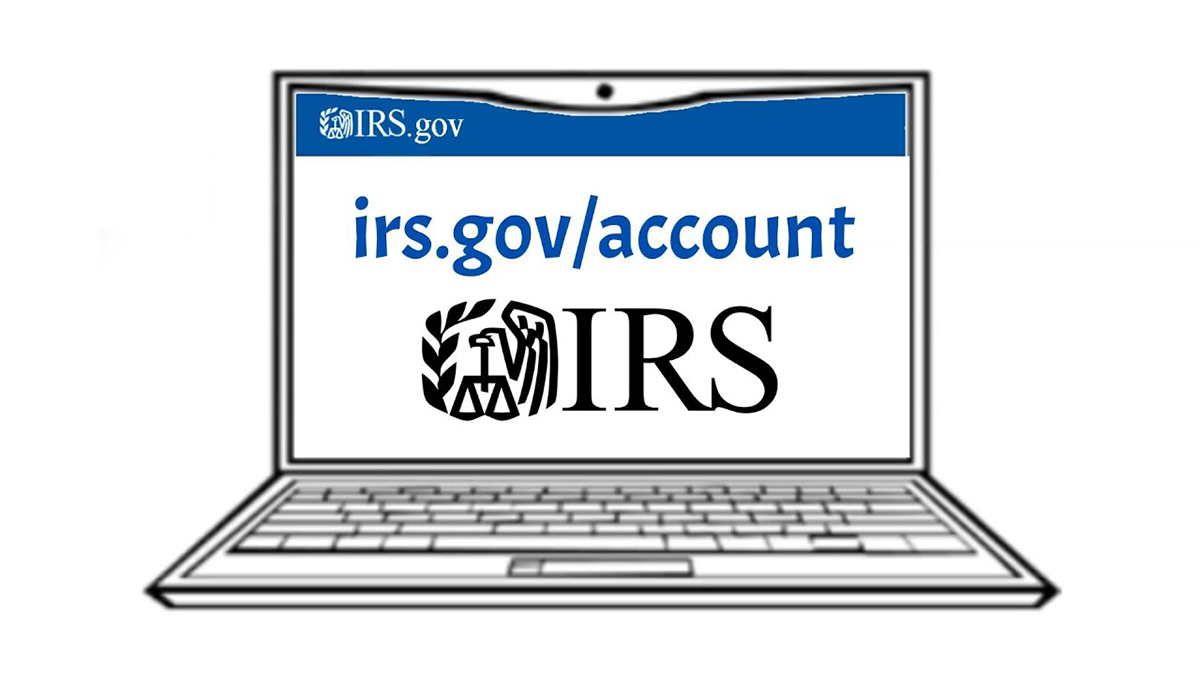

Finance
How Do I Check My Amended Tax Return
Modified: February 21, 2024
Learn how to check your amended tax return and ensure accuracy with helpful tips and guidance in the finance field.
(Many of the links in this article redirect to a specific reviewed product. Your purchase of these products through affiliate links helps to generate commission for LiveWell, at no extra cost. Learn more)
Table of Contents
- Overview of Amended Tax Returns
- Reasons for Amending a Tax Return
- Gathering the Required Documents
- Filing an Amended Tax Return
- Tracking the Status of an Amended Tax Return
- Common Mistakes to Avoid when Amending a Tax Return
- Potential Delays in Processing Amended Tax Returns
- Getting Help with Amended Tax Returns
Overview of Amended Tax Returns
Amending a tax return may seem like a daunting task, but it’s a necessary step to correct any errors or omissions made on your original tax return. An amended tax return allows you to make changes to your filing status, income, deductions, or credits after you have already filed your tax return.
There are various reasons why you may need to amend your tax return. Perhaps you discovered that you overlooked a valuable deduction or credit, or you received an additional income statement after filing your original return. Alternatively, you may have made a simple arithmetic error or realized that you provided incorrect information, such as misspelling a name or misreporting a social security number.
When filing an amended tax return, you are essentially starting over with the corrected information. This means that you will need to gather the necessary documents to support your amendments. This may include W-2 forms, 1099 forms, receipts, and any other relevant documentation related to the changes you are making.
Once you have gathered all the required documents, you can proceed with filing the amended tax return. This can be done by completing IRS Form 1040X, which is specifically designed for amending individual tax returns. Along with the form, you will need to include any schedules or forms affected by the changes you are making.
It’s important to note that filing an amended tax return does not necessarily mean that you’re inviting an audit from the IRS. In fact, the IRS encourages taxpayers to correct any errors promptly. However, it’s crucial to ensure the accuracy of the changes you are making and to provide appropriate documentation to support your amendments.
Once you have filed your amended tax return, it’s natural to wonder about the status of your submission. Tracking the progress of your amended return is possible through the IRS website or by calling the IRS directly. Be aware that the processing time for amended returns is typically longer than for original returns, and it may take several weeks or even months before you receive any updates or a refund.
It’s worth noting that there are common mistakes to avoid when amending a tax return. These include failing to include all required schedules and forms, not providing sufficient explanation or documentation for the changes made, and neglecting to double-check for accuracy before submission. By avoiding these pitfalls, you can help ensure a smoother and faster processing of your amended tax return.
If you’re unsure about how to navigate the process of amending your tax return or if you need assistance with complex tax situations, it’s advisable to seek help from a qualified tax professional. They have the expertise and knowledge to guide you through the process and ensure that your amended tax return is filed correctly.
Reasons for Amending a Tax Return
There are several reasons why you may need to amend your tax return. It’s important to understand these reasons so that you can identify when it’s necessary to make changes to your original filing. Here are some common situations that may require you to amend your tax return:
- Error or omission: One of the most common reasons for amending a tax return is the discovery of an error or omission on your original filing. This could be a simple math error that resulted in incorrect calculations or the omission of important information such as income, deductions, or credits.
- Missed deductions or credits: Upon reviewing your original tax return, you may realize that you missed out on valuable deductions or credits that could have reduced your tax liability. Examples include medical expenses, educational expenses, or tax credits for energy-efficient home improvements.
- Receiving additional tax documents: Sometimes, after you have already filed your tax return, you may receive additional tax documents, such as a corrected W-2 or 1099 form. If the information on these documents changes your taxable income or affects your deductions or credits, you will need to amend your return to reflect the updated information.
- Change in filing status: Your filing status determines how you are taxed, and sometimes circumstances change that may require a filing status amendment. For example, if you got married or divorced during the tax year, you may need to switch from filing as single to married filing jointly or married filing separately.
- Reporting incorrect information: It’s possible to make mistakes when filling out your tax return, such as misspelling a name or misreporting a Social Security number. These errors may seem minor, but they can potentially cause issues with the processing of your return, so it’s important to correct them through an amended tax return.
It’s crucial to address these situations by amending your tax return as soon as possible. Failing to correct errors or include missed deductions or credits could result in inaccurate tax calculations, potential underpayment or overpayment of taxes, and could even lead to penalties or interest charges.
When amending your tax return, it’s essential to be thorough and accurate in your revisions. Make sure to gather all the necessary documentation to support the changes you are making, such as receipts for deductions or additional income statements. Keep in mind that the IRS may request this documentation to verify the accuracy of the amendments you’ve made.
By amending your tax return when necessary, you can ensure that your tax filing is accurate and reflects your true financial situation. It’s always best to rectify any errors or omissions as soon as you become aware of them to avoid potential complications down the line.
Gathering the Required Documents
When preparing to file an amended tax return, it’s essential to gather all the necessary documents to support the changes you are making. These documents will help validate the accuracy of your amendments and ensure compliance with the IRS guidelines. Here are some important documents to gather:
- Original tax return: Start by locating a copy of your original tax return. This will serve as a reference point as you identify the areas that need to be amended.
- Amended tax form: Obtain a copy of IRS Form 1040X, which is used specifically for amending individual tax returns. This form will be used to make the necessary changes and calculations.
- Supporting forms and schedules: Identify any supporting forms or schedules that may be impacted by the changes you are making. Examples include Schedule A for itemized deductions, Schedule C for sole proprietorships, or Schedule D for capital gains and losses.
- W-2 and 1099 forms: Gather all the W-2 forms and 1099 forms that were issued to you during the tax year. These forms report your income from various sources, such as wages, salaries, dividends, or self-employment earnings. Verify that the information on these forms matches what you initially reported on your original tax return and make any necessary changes.
- Additional income statements: If you received any additional income statements after filing your original tax return, such as corrected W-2 or 1099 forms, include them in your amended tax return. This ensures that your taxable income is accurately reported.
- Receipts and documentation: If you are amending your return to claim additional deductions, credits, or adjustments, gather all the relevant receipts and supporting documentation. For example, if you are amending to claim a deduction for medical expenses, make sure to have the proper receipts and documentation to substantiate those expenses.
When gathering your documents, it’s crucial to keep everything organized and easily accessible. Create a folder or a digital file where you can collect and store all the necessary paperwork. This will save you time and frustration when you are ready to complete the amended tax return.
Remember, it’s essential to maintain the accuracy and integrity of your amended tax return by including all required documents that support your changes. Failure to provide adequate documentation could result in the denial of your amendments or trigger further inquiries from the IRS.
By gathering the required documents in advance, you can streamline the process of amending your tax return and ensure that your amendments are properly supported. This will result in a more accurate and compliant tax filing.
Filing an Amended Tax Return
When it comes to filing an amended tax return, the process differs slightly from filing an original return. Here are the steps to follow when filing an amended tax return:
- Gather the necessary forms: Obtain a copy of IRS Form 1040X, which is specifically designed for amending individual tax returns. Additionally, gather any supporting forms or schedules that need to be included with your amended return.
- Complete Form 1040X: Carefully fill out Form 1040X, ensuring that all the requested information is accurate and complete. Indicate the specific changes you are making and which lines on the original tax return are being amended.
- Include supporting documentation: Attach any supporting documents, such as additional income statements, receipts, or other documentation that validate the changes you are making. Make sure to keep copies of all these documents for your records.
- Explain the changes: Provide a clear and concise explanation of the changes you are making on your amended tax return. This can be done on a separate sheet of paper or in the designated space on Form 1040X.
- Double-check for accuracy: Before submitting your amended tax return, review all the information for accuracy. Ensure that you have correctly entered the updated numbers and that all calculations are correct.
- Sign and send: Sign and date your amended tax return. If you are filing a joint return, both spouses must sign. Once completed, mail the amended tax return to the appropriate IRS address. Remember to use certified mail or a reputable delivery service to track your package.
It’s important to note that amended tax returns cannot be e-filed; they must be filed by mail. Additionally, each tax year requires a separate Form 1040X. If you need to amend multiple years, you will need to complete and mail a separate form for each year.
Once the IRS receives your amended tax return, it will be processed separately from your original return. Keep in mind that the processing time for amended returns is generally longer than for original returns. It may take several weeks or even months before you receive any updates or a refund, if applicable.
If you need to make additional changes or corrections to your amended tax return after it has been submitted, you will need to file another Form 1040X. Be sure to follow the same process outlined above for each subsequent amended return.
Filing an amended tax return can be a complex process, especially if you have multiple changes or complicated financial situations. If you are unsure about any aspect of the process or need assistance, it’s always a good idea to consult with a qualified tax professional. They can provide expert guidance and ensure that your amended return is filed correctly.
Tracking the Status of an Amended Tax Return
After submitting your amended tax return, you may be curious about the status of your filing. While amended returns generally take longer to process than original returns, it is possible to track their progress. Here are a few ways to stay updated on the status of your amended tax return:
- IRS Online Tools: The IRS website offers several online tools that allow you to track the status of your amended tax return. One such tool is the “Where’s My Amended Return?” tool, which provides real-time updates on the progress of your amended return. To access this tool, you’ll need to provide your Social Security number, date of birth, and the ZIP code used on your original return.
- Phone Inquiries: If you prefer to get updates over the phone, you can contact the IRS directly. The toll-free number for individual taxpayers is 1-800-829-1040. When calling, be prepared to provide your Social Security number, date of birth, and any other relevant information to verify your identity. The IRS representative will be able to provide you with updates on the status of your amended return.
- Allow Sufficient Time: Keep in mind that processing times for amended tax returns are typically longer than for original returns. The IRS advises that it may take up to 16 weeks or more to process an amended return. Patience is key, and it’s essential to avoid repeatedly contacting the IRS for updates during this processing period.
- Check for Errors: While tracking the status of your amended return, take the opportunity to review your submission for potential errors. Double-check that the information you provided is accurate and matches your supporting documentation. This can help prevent any processing delays due to incorrect or incomplete information.
It’s important to note that the “Where’s My Amended Return?” tool is only available for amended returns filed using Form 1040X. If you filed your amended return using a different form or method, you may need to contact the IRS directly for updates on your filing.
Remember, the processing time for amended returns can vary depending on various factors, including the complexity of your amendments and the IRS workload. In certain cases, the IRS may need to review your supporting documentation or conduct further investigations before finalizing the processing of your amended return.
While waiting for updates on your amended return, it’s advisable to keep a copy of your submitted documents and any correspondence with the IRS. This will help you maintain a record of your filing and provide documentation if any issues arise in the future.
If you have not received any updates or a refund after an extended period, or if you believe there may be an issue with your amended return, it’s advisable to contact the IRS for clarification. They can provide guidance and insights into the status of your filing and help resolve any concerns you may have.
Common Mistakes to Avoid when Amending a Tax Return
When amending a tax return, it’s crucial to avoid common mistakes that can hinder the processing of your amended return and potentially invite additional scrutiny from the IRS. Here are some frequent errors to steer clear of when filing an amended tax return:
- Omitting required forms and schedules: Ensure that you include all the necessary forms and schedules that are affected by the changes you are making. Forgetting to include these supporting documents can lead to delays or even rejection of your amended return.
- Incomplete or insufficient explanation: When completing Form 1040X, make sure to provide a clear and thorough explanation of the changes you are making. This includes describing the specific items being amended and providing any necessary supporting documentation. Insufficient or vague explanations can result in requests for additional information from the IRS.
- Math errors: Double-check all calculations and ensure that your math is accurate. Even a minor error can have a significant impact on your amended return. Consider using tax preparation software or seeking professional assistance to ensure precise calculations.
- Failing to update all necessary information: When amending your tax return, ensure that you update all relevant information, including your filing status, social security number, and income amounts. Neglecting to update necessary information can cause discrepancies and potential issues with your amended return.
- Not signing and dating the amended return: Remember to sign and date your amended tax return before sending it to the IRS. If you are filing a joint return, both spouses must sign. An unsigned or undated amended return will not be considered valid.
- Forgetting to keep copies of the amended return and supporting documentation: It’s crucial to maintain copies of your amended return and all supporting documentation for your records. This includes both the original and amended tax returns, as well as any receipts, statements, or other supporting documents. These copies can serve as proof of your filing and can be helpful in case of any future inquiries or audits.
By avoiding these common mistakes, you can increase the efficiency and accuracy of your amended tax return filing. Taking the time to review your amended return for errors and ensuring all necessary information is included will greatly reduce the likelihood of unnecessary complications or delays in the processing of your return.
If you’re uncertain about the process or have complex circumstances that require expertise, consider seeking assistance from a qualified tax professional. They can provide guidance and help ensure that your amended return is filed correctly, minimizing the risk of errors or omissions.
Potential Delays in Processing Amended Tax Returns
Amended tax returns generally take longer to process compared to original tax returns. There are several factors that can contribute to delays in the processing of amended returns. Here are some potential reasons for these delays:
- IRS workload: The IRS processes millions of tax returns each year, including both original and amended returns. As a result, there can be a significant backlog during peak tax season, which may contribute to longer processing times for amended returns. It’s important to be patient and understand that the IRS is working diligently to review and process these filings.
- Complex amendments: If your amended return involves complex changes, such as multiple adjustments, deductions, or credits, it may require additional scrutiny and verification by the IRS. This can lead to longer processing times as the IRS ensures the accuracy and legitimacy of the amended return.
- Supporting documentation: The IRS may request additional supporting documentation to verify the changes made on an amended return. If you fail to provide adequate documentation or if the documentation is incomplete or unclear, it can result in delays as the IRS seeks clarification or additional information.
- Understaffing or system issues: Occasionally, the IRS may experience staffing shortages or technical problems with their processing systems, which can cause delays in the processing of all tax returns, including amended returns. While uncommon, these factors can impact the turnaround time for amended returns.
- Filing outside of tax season: If you file your amended return outside of the regular tax filing season, such as in the months after April, there may be fewer personnel available to process returns. This can result in extended processing times as the IRS prioritizes returns filed during the peak tax season.
While you may be eager for an update on the status of your amended return, it’s important to remember that processing times can vary and delays are not uncommon. The IRS typically advises allowing up to 16 weeks for the processing of an amended return. During this time, you can use the IRS online tool “Where’s My Amended Return?” or contact the IRS directly for updates if necessary.
Furthermore, it’s important to note that amended returns are processed manually rather than electronically, which can contribute to longer processing times. The IRS carefully reviews each amended return to ensure accuracy and compliance with tax laws, so it’s crucial to provide complete and accurate information to minimize any possible delays.
If you believe there has been an excessive delay in the processing of your amended return, you may consider contacting the IRS to inquire about the status. However, it’s advisable to wait at least 16 weeks before doing so to allow for normal processing times.
By understanding the potential delays that can occur with amended tax returns, as well as exercising patience and providing complete and accurate information, you can help streamline the processing of your amended return.
Getting Help with Amended Tax Returns
Filing an amended tax return can be a complex process, especially if you’re unsure about the necessary steps or if you have complex financial circumstances. Fortunately, there are resources available to help you navigate the process and ensure that your amended return is filed correctly. Here are some options for getting assistance with amended tax returns:
- Tax Professionals: Consider seeking help from a qualified tax professional, such as a certified public accountant (CPA) or enrolled agent (EA). These professionals specialize in tax matters and can provide expert guidance on filing amended tax returns. They can review your specific situation, help identify any errors or omissions, and ensure that all necessary forms and schedules are properly filled out.
- IRS Resources: The IRS provides resources and information on their website to assist taxpayers with amending their tax returns. You can access publications, forms, and instructions specific to filing amended returns. The IRS also has a toll-free helpline available for taxpayer assistance.
- Volunteer Income Tax Assistance (VITA) Program: If you meet certain income requirements, you may be eligible for free tax preparation services through the VITA program. VITA volunteers are trained to provide assistance with various tax matters, including filing amended returns. Contact your local VITA program to inquire about their services and schedule an appointment.
- Online Tax Software: Various online tax software programs offer guidance and assistance for filing amended tax returns. These programs can help you navigate the process, ensure accurate calculations, and provide step-by-step instructions for amending your return. Review different software options to find one that suits your needs.
- IRS Taxpayer Advocate: If you encounter significant challenges or delays with your amended return and require assistance, you can contact the IRS Taxpayer Advocate Service. They are an independent organization within the IRS that helps taxpayers resolve issues and ensures their rights are protected. The Taxpayer Advocate Service can provide guidance and support during the process of filing an amended tax return.
When seeking assistance with amending your tax return, it’s important to provide all relevant information to the professional or organization helping you. Gather and organize the necessary documents, including your original tax return, any additional income statements, and supporting documentation for the changes you are making.
Remember, filing an amended tax return is an important step in ensuring the accuracy of your tax filing. Getting the necessary help and support can alleviate stress and minimize the risk of errors or omissions that could result in further complications or delays.
By utilizing the available resources and seeking assistance from qualified professionals, you can navigate the process of filing an amended tax return more efficiently and with confidence.














